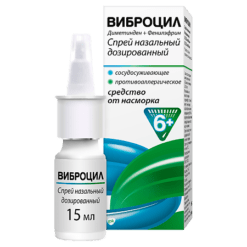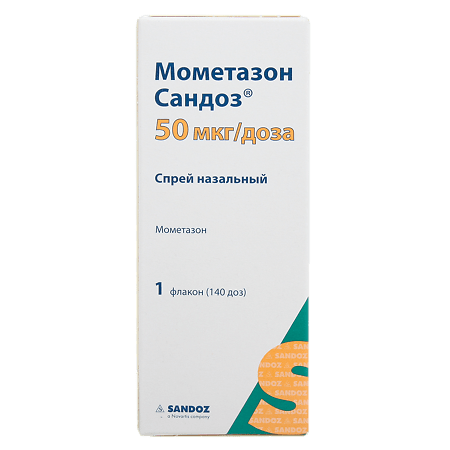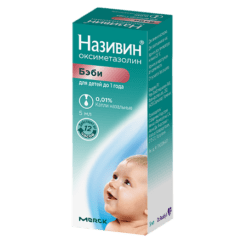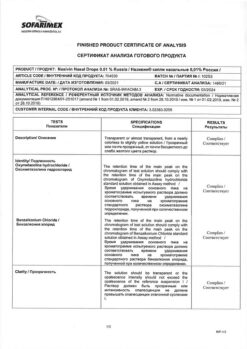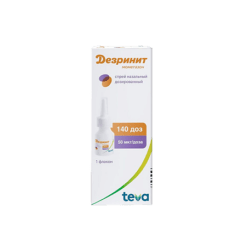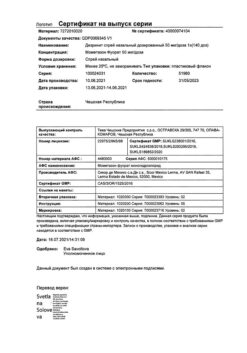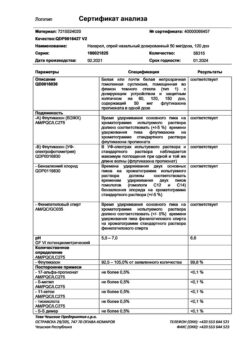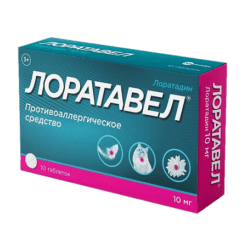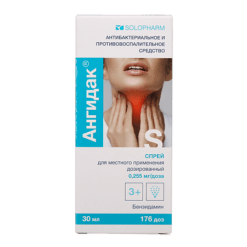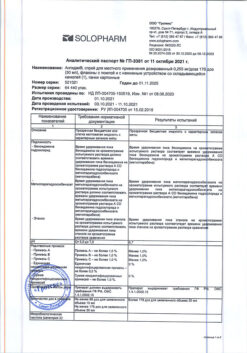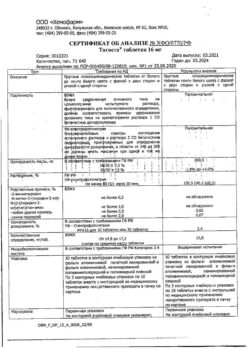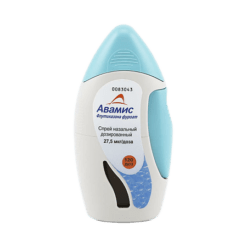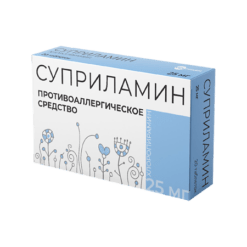Subtotal: €10.94
Mometazon Sandoz, 50 mcg/dose 18 g spray
€15.91 €13.26
GCS of intranasal application.
It has anti-inflammatory and anti-allergic effect.
The mechanism of anti-allergic and anti-inflammatory action is due to the ability to inhibit the release of inflammatory mediators. It increases production of lipomodulin, which is an inhibitor of phospholipase A, thus reducing the release of arachidonic acid, and, accordingly, inhibiting the synthesis of products of arachidonic acid metabolism – cyclic endoperoxides, prostaglandins.
It prevents marginal accumulation of neutrophils that reduces inflammatory exudate and lymphokine production, inhibits macrophage migration, results in a decrease of infiltration and granulation processes.
In vitro reduces inflammation due to a decrease in chemotaxis substance formation (effect on late allergic reactions), inhibits the development of immediate allergic reactions (caused by inhibition of arachidonic acid metabolites production and decrease in inflammatory mediators release from mast cells).
In vitro mometasone furoate significantly inhibits the release of leukotrienes from leukocytes. In cell cultures, mometasone furoate has demonstrated a high ability to inhibit the synthesis and release of IL-1,IL-5, IL-6, and TNFα; it is also an inhibitor of leukotriene production and is an extremely potent inhibitor of Th2 cytokines, IL-4 and IL-5, by human CD4+ T-cells.
In studies in preclinical models, mometasone reduced inflammatory cell accumulation (including eosinophils), infiltrated the walls of the upper and lower airways, and improved lung function after a provocation test. Mometazone decreased lymphocyte counts and mRNA concentrations of cytokines IL-4 and IL-5.
In studies with nasal mucosa antigen provocation tests, high anti-inflammatory activity of Mometazone was demonstrated in both the early and late stages of an allergic reaction.
This was confirmed by a decrease (compared with placebo) in histamine levels and eosinophil activity, as well as a decrease (compared with baseline) in eosinophils, neutrophils and epithelial cell adhesion proteins.
Pharmacokinetics.
After intranasal administration, the systemic bioavailability of mometasone is low, particularly because of low absorption and significant presystemic metabolism upon swallowing mometasone.
When used at the recommended doses, the plasma concentration of mometasone is near or below the threshold of determination (50 pg/mL). As a consequence, neither the T1/2 nor the Vd of mometasone after inhalation can be determined. It is excreted in the urine and bile.
Indications
For intranasal use:
Pharmacological effect
GCS for intranasal use.
Has anti-inflammatory and anti-allergic effects.
The mechanism of antiallergic and anti-inflammatory action is due to the ability to inhibit the release of inflammatory mediators. Increases the production of lipomodulin, which is an inhibitor of phospholipase A, which causes a decrease in the release of arachidonic acid and, accordingly, inhibition of the synthesis of arachidonic acid metabolic products – cyclic endoperoxides, prostaglandins.
Prevents the marginal accumulation of neutrophils, which reduces inflammatory exudate and the production of lymphokines, inhibits the migration of macrophages, and leads to a decrease in the processes of infiltration and granulation.
Reduces inflammation by reducing the formation of a chemotaxis substance (impact on late allergy reactions), inhibits the development of an immediate allergic reaction (due to inhibition of the production of arachidonic acid metabolites and a decrease in the release of inflammatory mediators from mast cells).
In vitro, mometasone furoate significantly inhibits the release of leukotrienes from leukocytes. In cell cultures, mometasone furoate demonstrated a high ability to inhibit the synthesis and release of IL-1, IL-5, IL-6, as well as TNFα; it is also an inhibitor of leukotriene production, as well as an extremely potent inhibitor of Th2 cytokines, IL-4 and IL-5, by human CD4+ T cells.
When studied in preclinical models, mometasone reduced the accumulation of inflammatory cells (including eosinophils), penetrated into the walls of the upper and lower respiratory tract, and also improved lung function after a challenge test. Mometasone reduced the number of lymphocytes and the concentration of mRNA for the cytokines IL-4 and IL-5.
In studies with provocative tests with the application of antigens to the nasal mucosa, the high anti-inflammatory activity of mometasone was demonstrated, both in the early and late stages of the allergic reaction.
This was confirmed by a decrease (compared to placebo) in histamine levels and eosinophil activity, as well as a decrease (compared to baseline) in the number of eosinophils, neutrophils and epithelial cell adhesion proteins.
Pharmacokinetics.
After intranasal administration, the systemic bioavailability of mometasone is low, in part due to poor absorption and significant first-pass metabolism when mometasone is swallowed.
When used in recommended doses, the plasma concentration of mometasone is near or below the detection threshold (50 pg/ml). As a result, it is impossible to determine either T1/2 or Vd of mometasone after inhalation. Excreted in urine and bile.
Special instructions
Mometasone should be used with caution in case of tuberculosis infection (active or latent) of the respiratory tract, untreated fungal, bacterial, systemic viral infection or infection caused by Herpes simplex with eye damage (as an exception, the drug can be prescribed for these infections as directed by a doctor), the presence of an untreated local infection involving the mucous membrane of the nasal cavity.
With long-term intranasal use of mometasone, periodic examination of the nasal mucosa by an ENT doctor is necessary. If a local bacterial or fungal infection of the nose or throat develops, it is recommended to stop treatment and begin special treatment.
Active ingredient
Mometasone
Composition
1 dose:
Pregnancy
There have been no adequate and well-controlled studies of the use of mometasone during pregnancy. It is not known whether mometasone is excreted in breast milk.
Intranasal use of mometasone during pregnancy and breastfeeding is only possible if the expected benefit to the mother outweighs the potential risk to the fetus or infant.
Newborns whose mothers received corticosteroids during pregnancy should be monitored for possible symptoms of adrenal insufficiency.
Side Effects
From the respiratory system: with intranasal use, nosebleeds, pharyngitis, a burning sensation in the nose, sneezing are possible; irritation of the nasal mucosa; very rarely with intranasal use – cases of perforation of the nasal septum.
Other: possible headache.
Manufacturer
Lek Pharmaceuticals d.d., Slovenia
| Manufacturer | Lek d.d., Slovenia |
|---|---|
| Medication form | nasal spray |
| Brand | Lek d.d. |
Related products
Buy Mometazon Sandoz, 50 mcg/dose 18 g spray with delivery to USA, UK, Europe and over 120 other countries.

